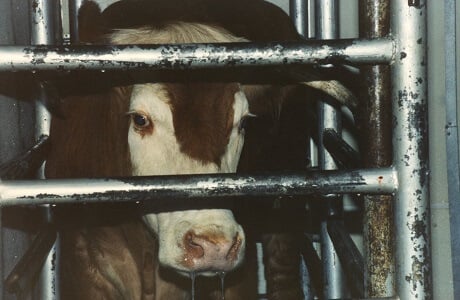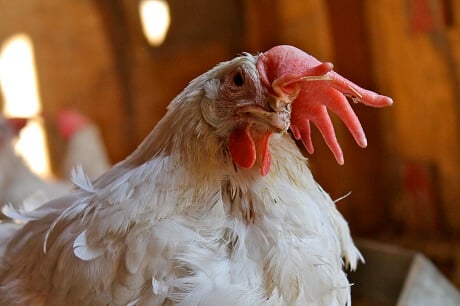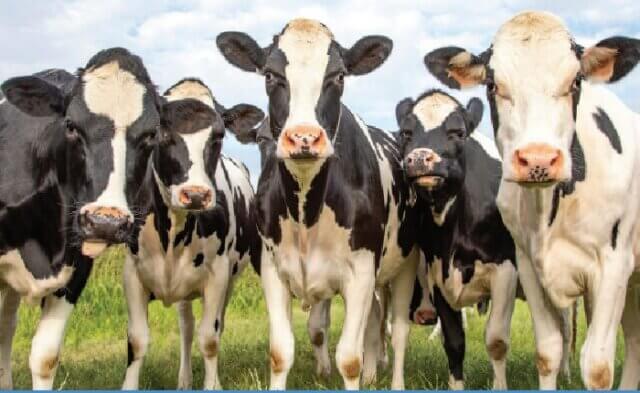It’s the most important day in the Christian calendar. Easter Sunday is the day when we celebrate the fact that Jesus conquered death and darkness so that His followers could have eternal life, and it is the foundation of our faith. We go to church to hear the Easter story every year, and we shake our heads in disgust as our pastors describe the extreme barbarism with which religious and government leaders tortured and killed Him. But what if similar abuse were being meted out to this very day—every day—to others who are just as innocent?
The similarities between the story of Jesus’ crucifixion and the ways in which animals are raised and killed to be eaten are uncanny and undeniable.
Jesus was killed because people refused to believe that He could truly be the son of God sent to save the world from sin. Animals are killed by the billions every year because people refuse to believe that they could be thinking, feeling, intelligent, emotional beings whom God created and blessed and whom He loves very much.
The soldiers who were responsible for guarding Jesus after He was arrested mocked and beat Him. Numerous PETA investigations have exposed farmworkers who mocked and beat the animals for whom they were responsible. PETA’s eyewitness investigation of a New York state dairy farm found that workers routinely jabbed and struck cows in the face, udder or hindquarters with a pole or a cane. A manager electro-shocked at least one cow in the face repeatedly and called a downed cow a “dumb bitch.” At a pig factory farm in Iowa, PETA’s eyewitnesses documented that workers beat pigs with metal gate rods and a herding board, jabbed clothespins into their eyes and defended their own violence by saying things like, “You gotta beat on the bitch. Make her cry.” Similar abuse has been revealed at farms across the country.
Jesus’ broken body was nailed to a cross, and He was left hanging there to die. In slaughterhouses, animals are routinely strung up by their legs, their throats are cut—often while they’re fully conscious—and they are left hanging there to die.
The soldiers stripped Jesus of His clothes and cast lots for them. Animals are skinned and cut into pieces, often while still conscious, and their body parts are sold for profit. One worker at a cow slaughterhouse told The Washington Post, “They die piece by piece.”
The major difference between the Easter story and the fate of animals who are killed for food is that while Jesus didn’t want to suffer and die, He nevertheless offered Himself up as an innocent sacrifice in order to save God’s children from death. Animals value their own lives, too, but they have not offered themselves up and don’t want to die just to give humans a fleeting taste of their flesh.
At the Last Supper, Jesus commanded the apostles—and all of us—to “love one another.” The name of the day on which we remember the Last Supper, Maundy Thursday, even comes from the word “mandate.” But there is nothing loving about the ways in which animals are abused and killed for our plates. Each animal is God’s perfect creation, an individual with the ability to feel pain, joy, fear and love. And thus, each human has a choice to make three times on Easter Sunday and every day when sitting down to eat: Shall I contribute to suffering, or shall I extend mercy?






